This summer we’re “feeling the heat” as we deal with drought and worry about the threat of fire on our island. (Where would we go??) Water conservation is nothing new to any gulf islander, of course. Although Dennis and I have a good well, many islanders buy drinking water year round and use captured rain water, held in cisterns, for other purposes. My friends in Vancouver are now under Level 3 water restrictions, which means no watering of lawns or washing of cars, etc. They’re busy learning how to cope with limited water supplies. But no one I know here on Gabriola Island would ever waste precious well or captured water to keep a car clean or water a lawn. I guess we’re always on a self-imposed Level 3. And these days many of us, our household included, are catching most of the water coming out of our faucet in a big bowl and carrying it out to water selected plants in the garden, mostly the food. And we save our pre-shower water (what would “normally” go down the drain as the water is heating up in the morning) to replenish the bird and bee baths every day.
For two days this week, though, we got some RAIN! Not enough to replenish the aquifers or help the deep root trees, but enough to give a lot of the very thirsty plants and ground cover and birds a fighting chance.
Speaking of birds, our yard is inundated with families right now. I guess they know what side their bread is buttered on.
Our little “wild” back garden is a favourite nesting spot, especially for Spotted Towhees, Song Sparrows, and Dark-eyed Juncos. I think they like the cover of all the salal as well as the weed seeds! So far it’s survived the drought quite well without any watering. This photo was pre-rain, after weeks of high temps.
When this Pileated Woodpecker mother and daughter showed up in the yard, I quickly stocked up on suet.
She quickly learned the ropes while Mom and Dad watched from a cedar tree not far away.
I don’t see much of the parents but this juvenile Hairy Woodpecker is a regular. Note the beginnings of the red cap.
A nice bath is always good after lunch, especially in this heat!
For the first time this year, we have a big family of Black-headed Grosbeaks, parents and 3 offspring. I’ve bought more suet, the non-drippy kind, in bulk.
Not sure if this grosbeak is the mother or a juvenile. They look quite similar, although I think the mother’s plumage is slightly darker and more variegated.
There are two families of Spotted Towhees in the yard. One is based in the side garden (as above) and the other in the back garden. I think this is the mother of the side garden family. I’ve tried to get some photos of the kids but they’re just too rambunctious!
This is one of the two juvenile Song Sparrows from the back garden clan who constantly fight with each other. This one just won the battle for the bath. His sibling is waiting, out of sight, under the bath.
A quick dry off in the hot sun.
Honk honk honk!! This is the parent of a family of Red-breasted Nuthatches. For such a small bird, it’s amazing how far their “honk” carries.
I haven’t seen any babies from this Red-breasted Sapsucker but he’s a regular visitor to the yard. This is the first time I’ve seen him in one of the bird baths.
This spunky Anna’s female is a year-round visitor.
Love waking up to the robins!
Always lots of House Finches. This guy was gleaning bugs from the plum tree.
These little guys are so comfortable with us humans. If I take the feeders down for awhile and am patient enough, they’ll eat from my hand. Chestnut-backed Chickadees are unique to the gulf islands, Vancouver Island, and the Pacific coast. Their Black-capped kin inhabit the Pacific Coast (though not the islands) and the rest of the country.
This is the first year we’ve put out a Bee Bath. Both honey bees and wasps feast on the oregano then have a drink. What would life on earth be without the birds AND bees?
How are YOU and your birds and bees coping with the drought?



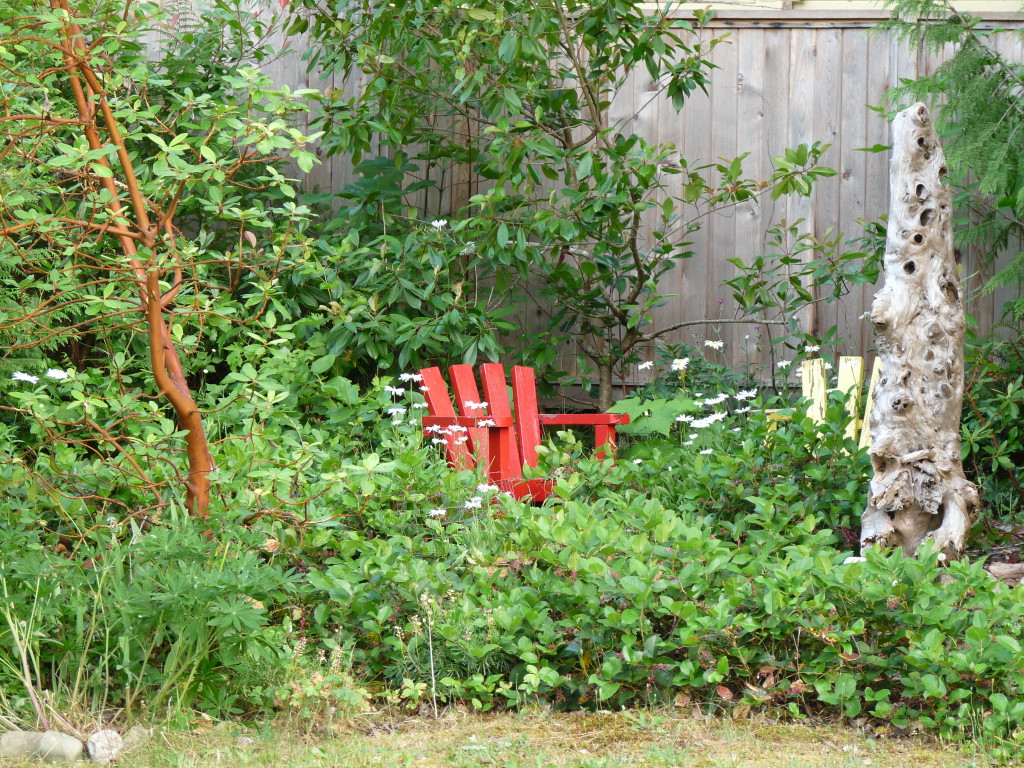
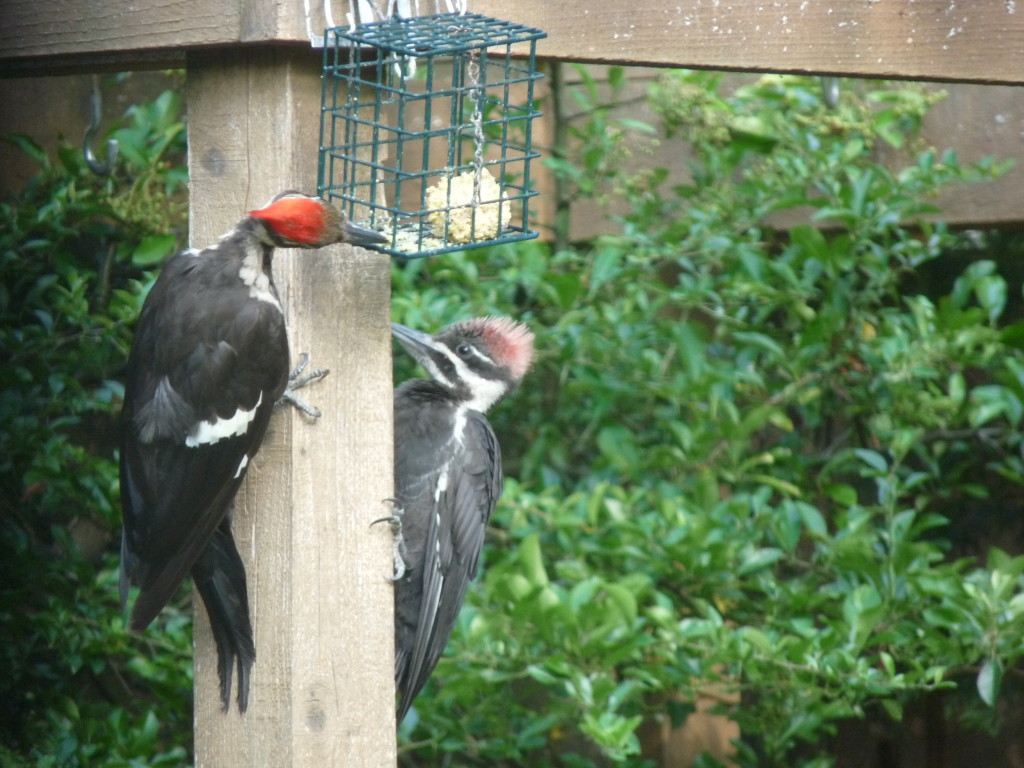
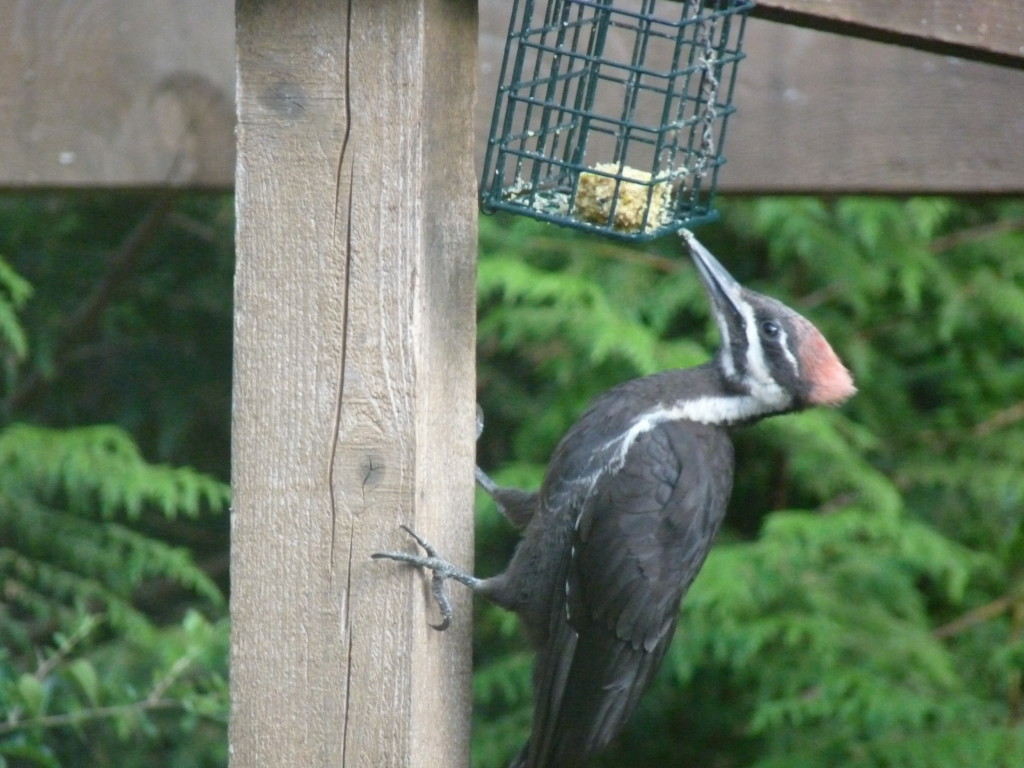
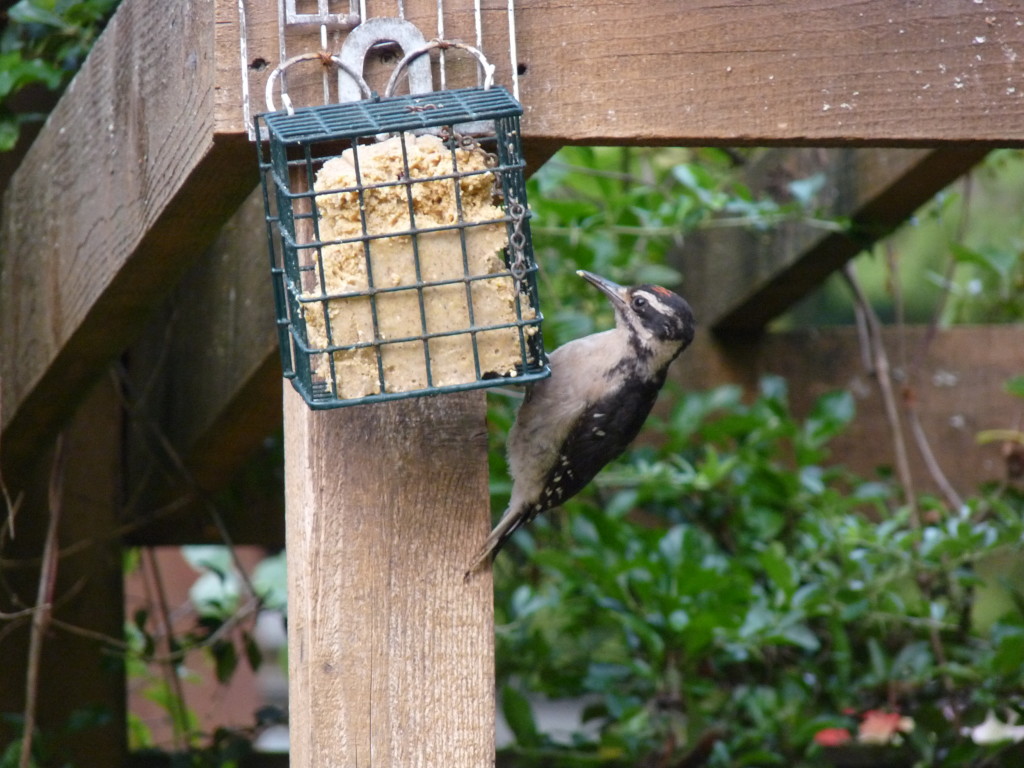
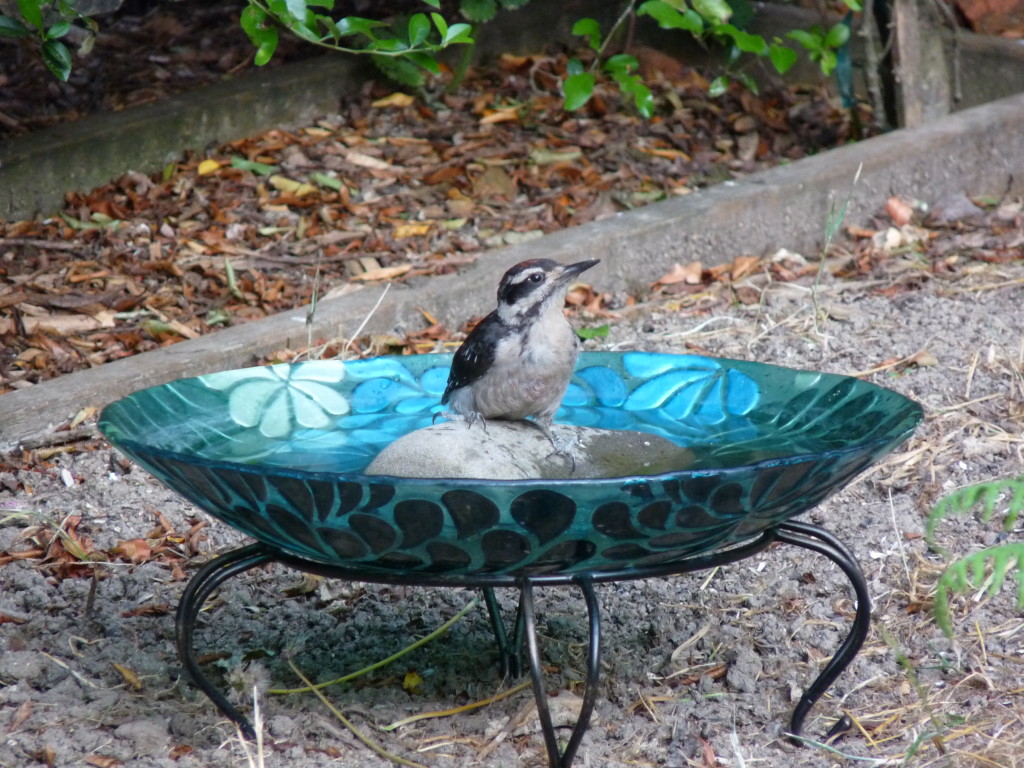
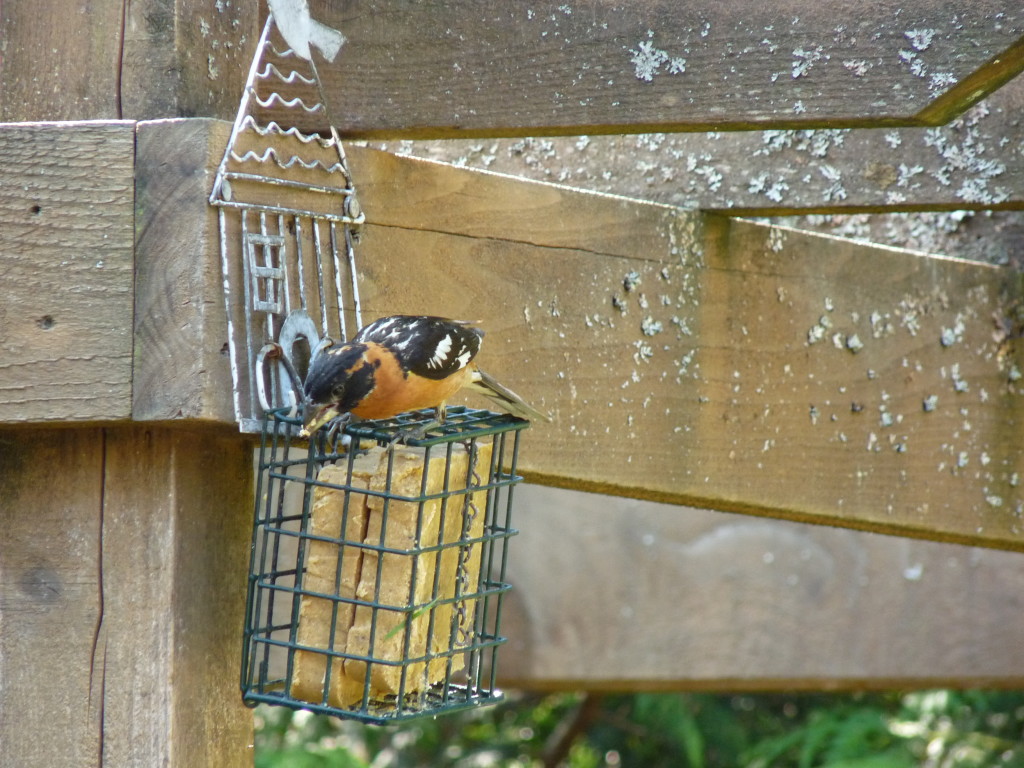
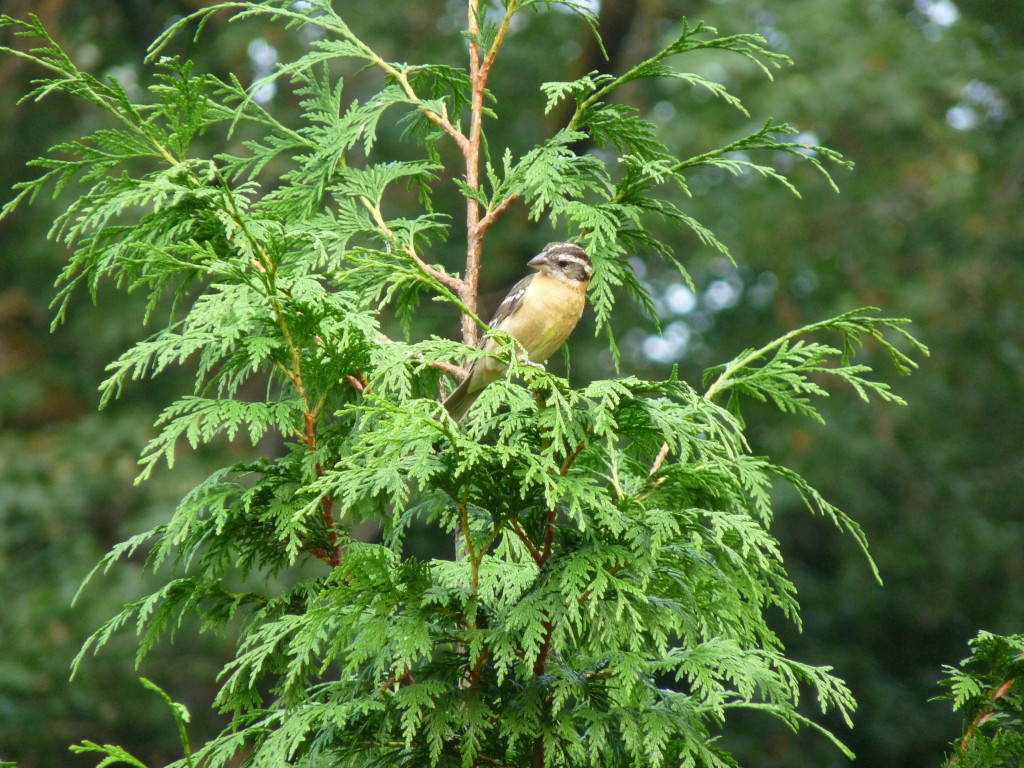
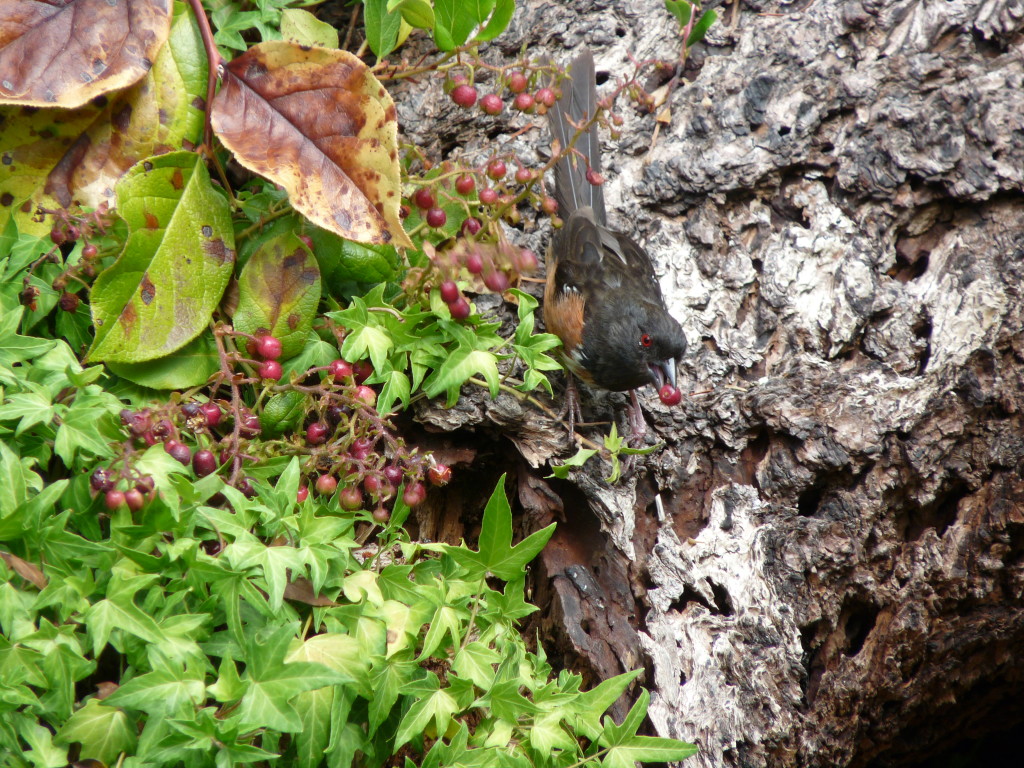
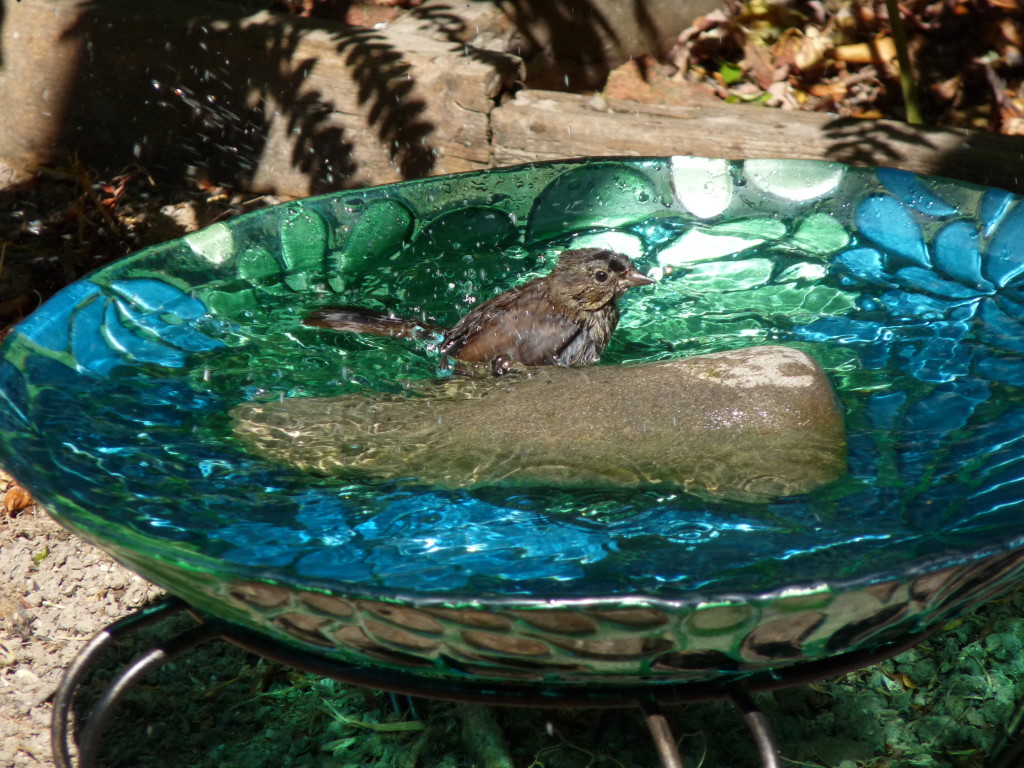
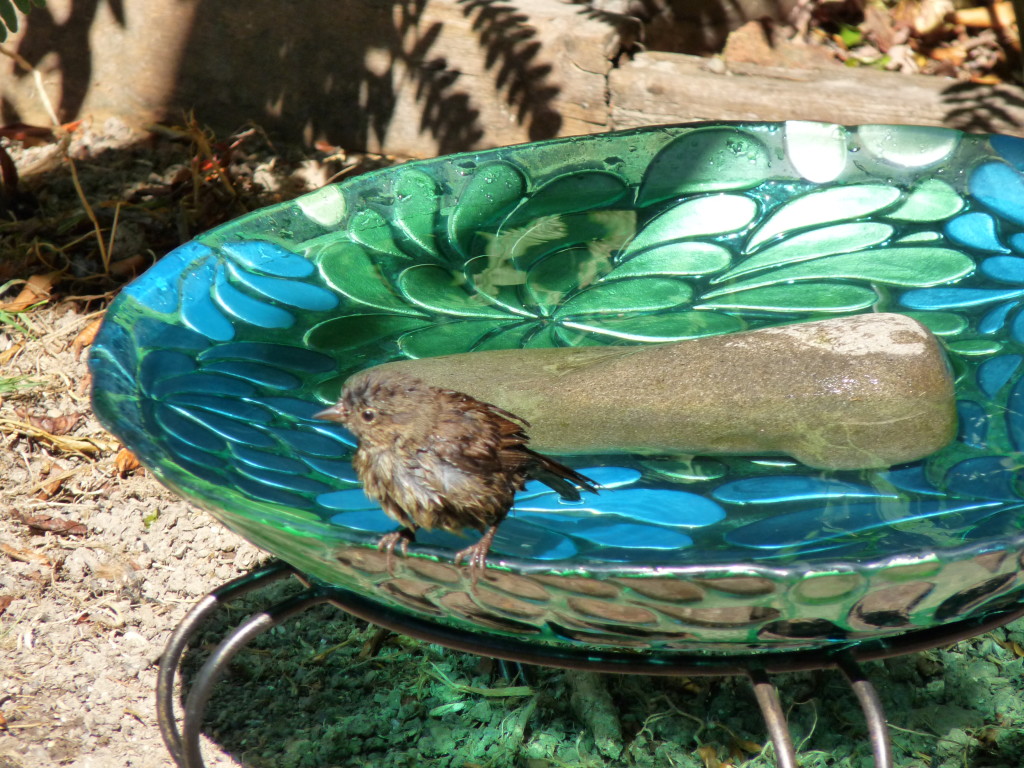
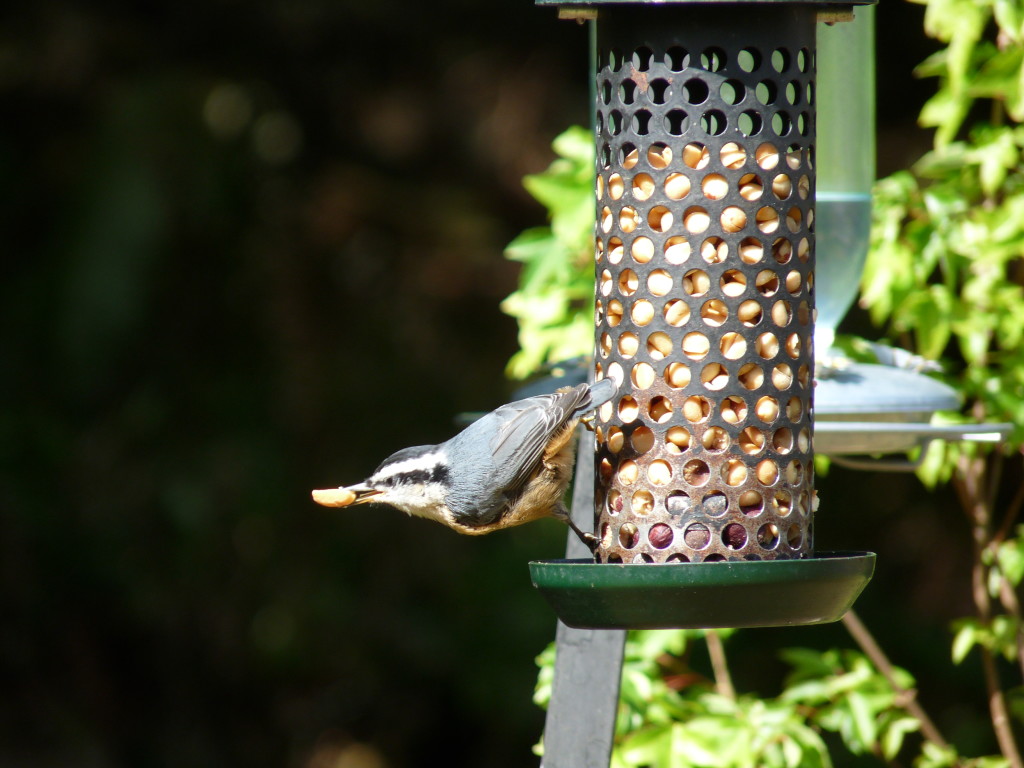
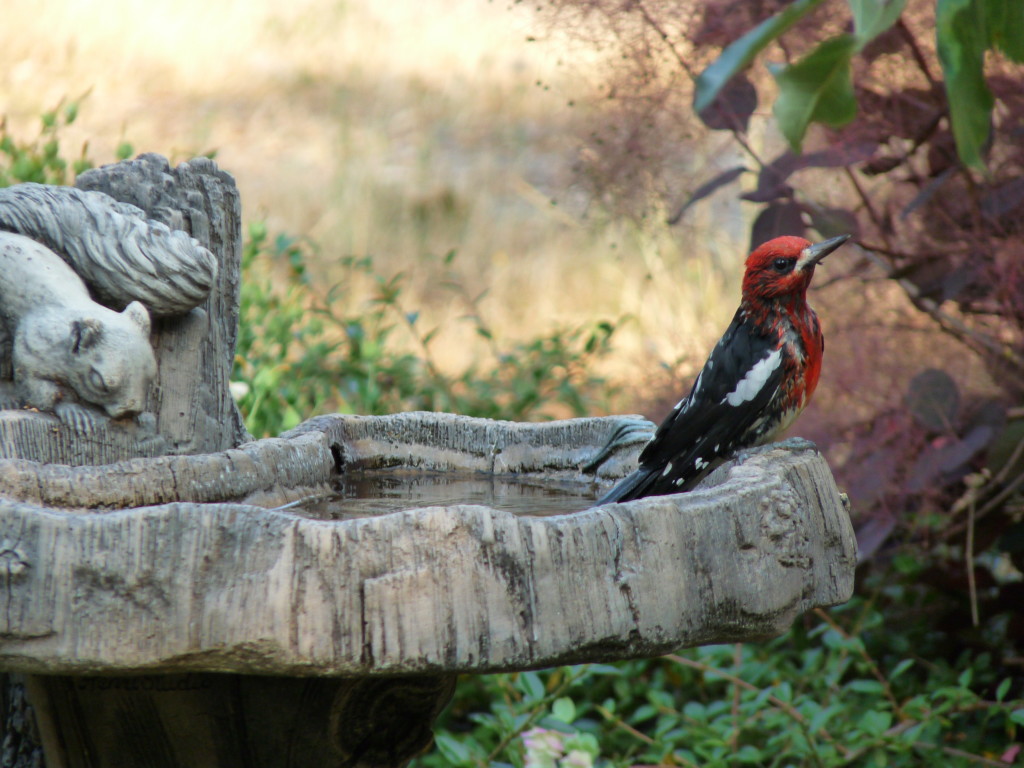
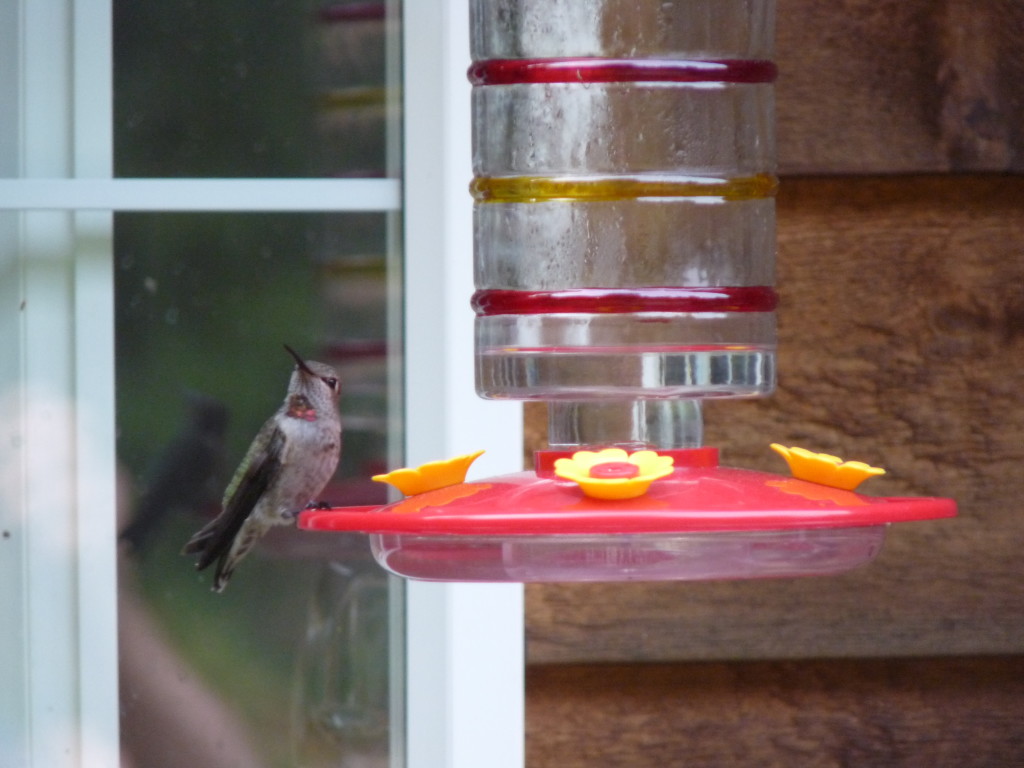
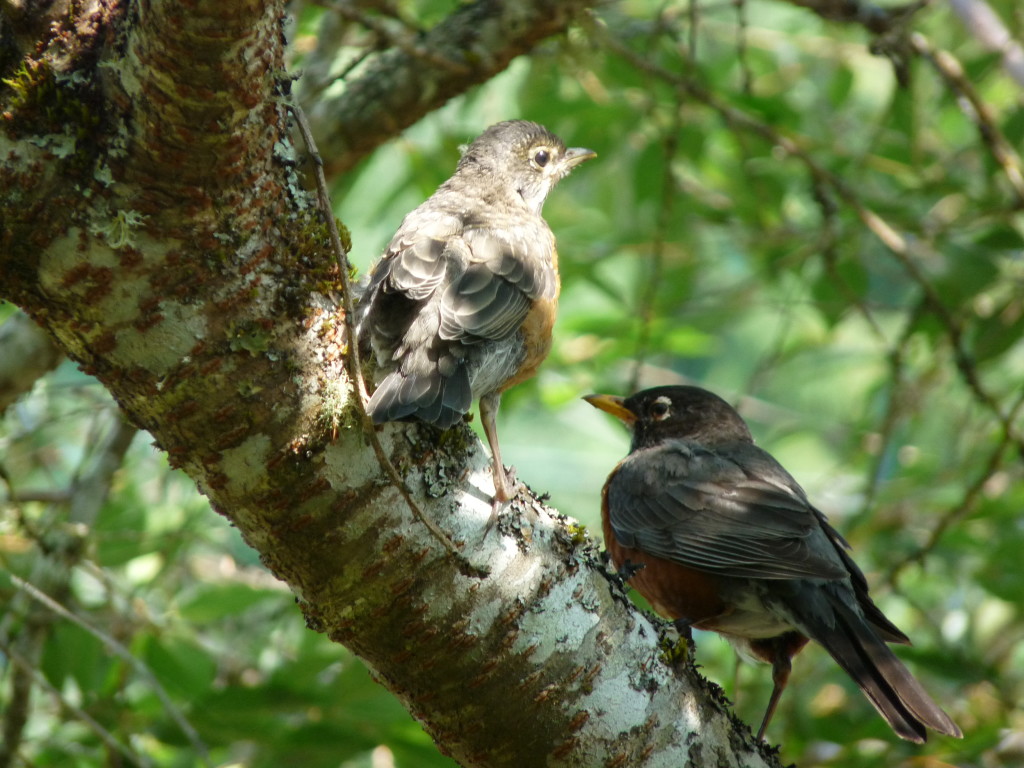
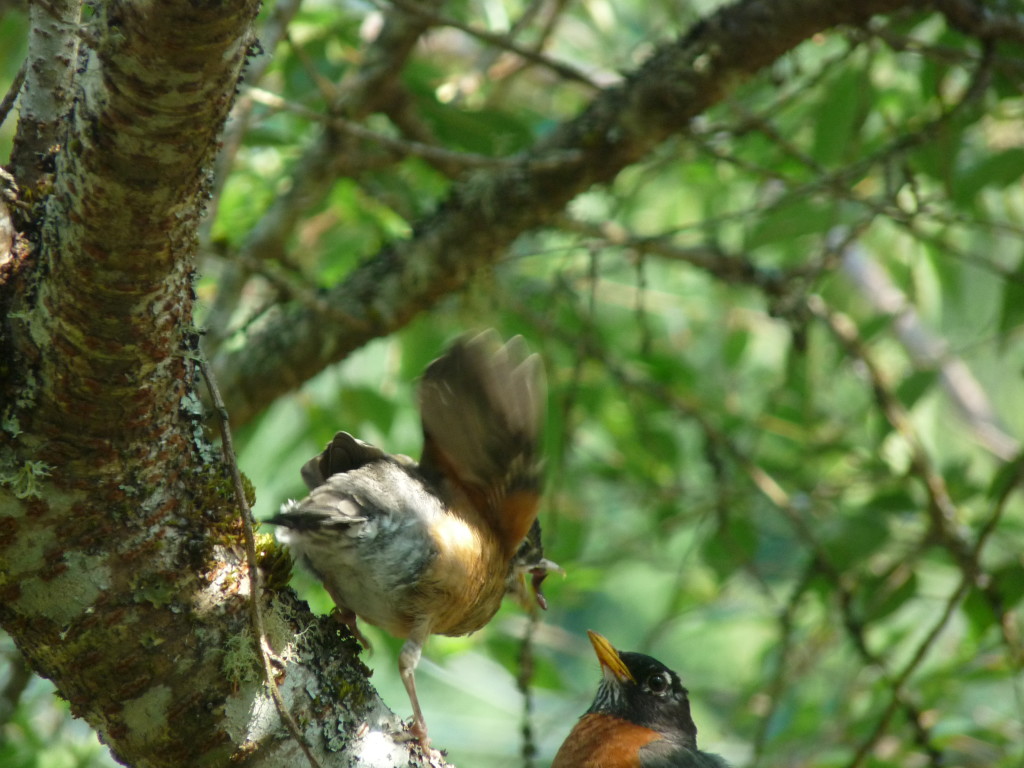
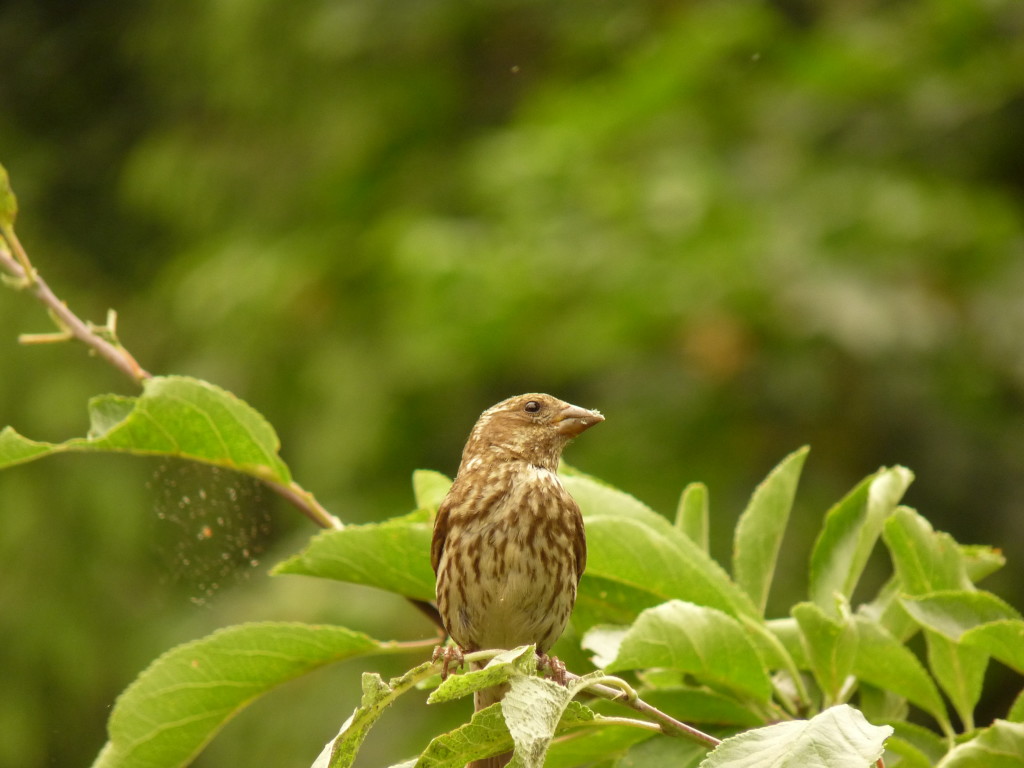
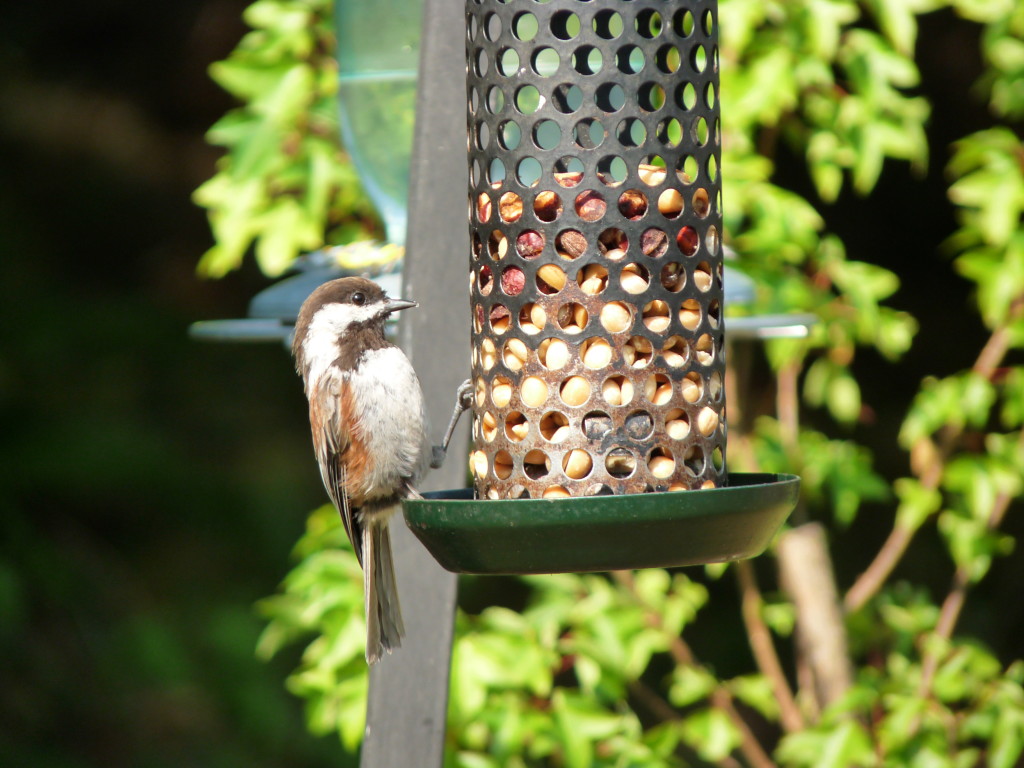
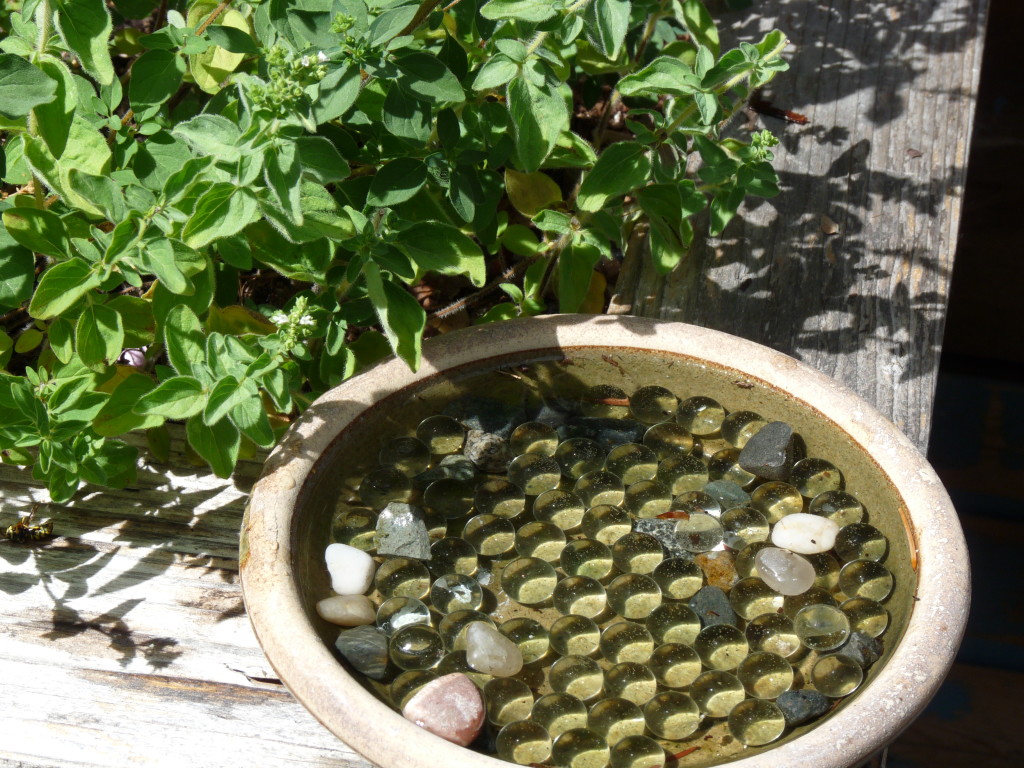
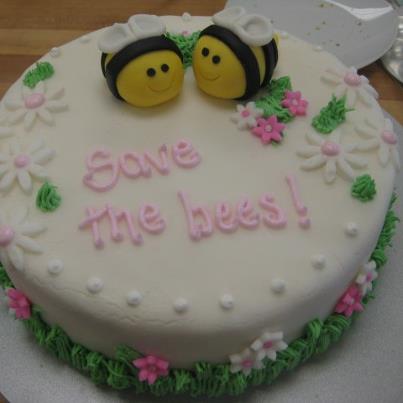
Tammie – Thanks for your comments. “Excessive bear activity” sounds worrisome! We don’t have bears here normally although one swam over a few years ago, causing much ado! But we do have racoons that love bird seed. Hope things calm down there (bear-wise) soon so you can welcome your birds again.
Sigh …. your wonderful article makes me miss my birds! In northwestern Ontario, I’ve had to put all my feeders away this summer due to excessive bear activity. Chickadees are just returning to the yard after nesting season but otherwise, it’s soooo quiet out there. You and I do have some woodpeckers in common for our areas tho’, the Pileated and the Hairy! 🙂
Tammie in Manitouwadge, ON
Thanks for your comment Gilda. Yes, I do feel lucky to live here! Walking around the garden and “talking” to the birds brings much pleasure.
How wonderful to have this world of birds in your backyard! So lucky. I live downtown and enjoy a very limited number of birds: cardinals, house finches, an occasional bluejay, an infrequent mourning dove, lots of canada geese and starlings, grackles…and…well…I like living downtown but I miss the birds in the backyard!